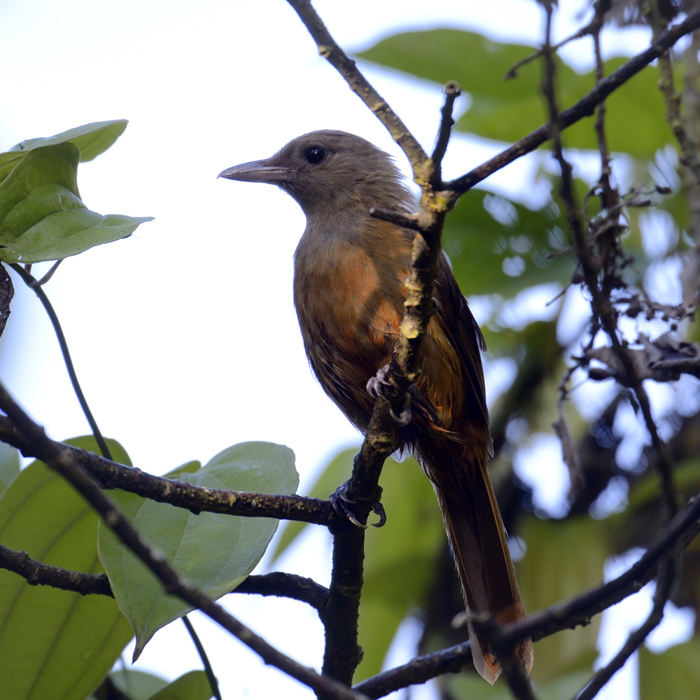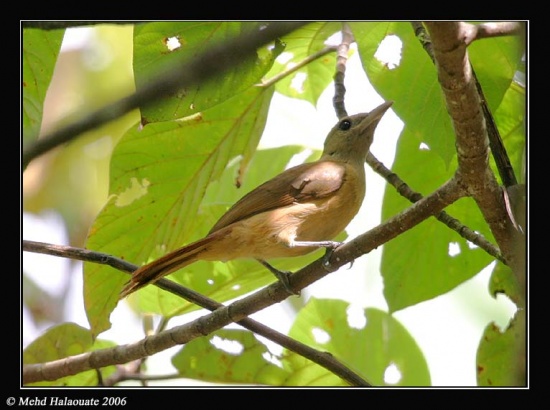
Pitohui kirhocephalus
SUBFAMILY
Pachycephalinae
TAXONOMY
Lanius kirhocephalus Lesson and Garnot, 1827, Dorey, Vogelkop,
New Guinea. Twenty-one subspecies.
OTHER COMMON NAMES
French: Pitohui variable; German: Okkerpitohui; Spanish:
Pitojuн Variable.
PHYSICAL CHARACTERISTICS
9–10 in (23–25.5 cm); 0.19–0.22 lb (85–100 g). Black head and
primary feathers with orange underparts, rufous back and secondaries,
and black legs.
DISTRIBUTION
New Guinea and satellite islands.
HABITAT
Thick vegetation along forest edges and in secondary growth
and disturbed forest up to 3,630 ft (1,100 m), in places to
4,950 ft (1,500 m).
BEHAVIOR
Gregarious, usually seen in pairs or small parties. Secretive,
hides in dense vegetation. Has a loud musical voice; duetting
between birds has been recorded.
FEEDING ECOLOGY AND DIET
Insects and fruit. Often joins other species in mixed-species
foraging flocks.
REPRODUCTIVE BIOLOGY
Nesting habits and eggs are undescribed.
CONSERVATION STATUS
Not threatened. Abundance variable across range; very common
in places, rare or absent in others.
SIGNIFICANCE TO HUMANS
Avoided as food because of unpleasant taste, known to be due
to toxin in tissues.
Other popular Animals
Photo Gallery of - Variable pitohui




 Animalia Life
Animalia Life